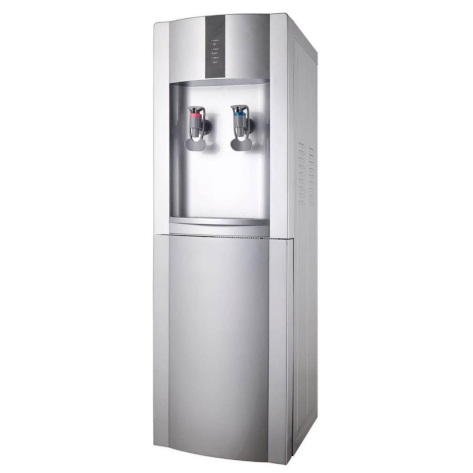Sizes of water cooler tanks are an important consideration when purchasing the refrigerator or water dispenser. Large tanks can cut energy consumption and stop mineral build-up.
Water dispensers could be bottled variants that accept bottles of 2 to 5 gallons or plumbed models that utilize an internal water reservoir. If you select the bottleless version, make sure you choose one that has a UV LED Sanitization light to ensure that the tank’s contents clean.
Water dispensers with cold and hot water capacity
Water dispensers provide room temperature or chilled water through the tap. They are available in a variety of styles and sizes, ranging from floor-standing models to countertop models which are placed on top of a counter or another surface. They also have a hot tap for making tea as well as other hot drinks. They’re generally less expensive than coolers and use less energy. These are sold at retailers for home improvements as well as department stores and wholesale clubs like Costco as well as Sam’s Club.
Some models have an water tank which holds the capacity of 2-, 4- five-gallon bottles. They’re usually easy to move and have a small footprint. Many are straightforward to operate and only require plugging into a power outlet. They are cleanable with a solution of water and bleach. They’re suitable for use in the refrigerator.
Bottle-less water coolers are a great alternative to traditional kettles used in office spaces. They plug directly into the water supply and utilize an exclusive filtration system that will ensure you receive fresh, clean drinking water. They can be more expensive initially, however they offer a lower operational cost over bottled water coolers. Additionally, they will save you more money over the long term as they do away with delivery charges and storage problems associated with empty bottles. The majority of top-quality models utilize the reverse osmosis machine in order to provide the highest quality water quality.
Technology for filtering water in the water dispenser
Water dispensers are either freestanding or mounted on a wall. They hook up to the building’s plumbing system to serve as the water source, but the earlier relies upon gravity and vacuum pressure to direct the water out of a bottle to the water spout. The majority of water dispensers are 5-US-gallon bottle (labeled as 18.9 liters elsewhere). Certain models have an opening for a basin to collect spills and other models offer a bottom-load option.

However, regardless of the design however, all water dispensers employ a filter to remove contaminants from drinking water. These filters are generally made from activated carbon, which is an element that forms pores when it is partially burned or crushed. It is typically used for water purification. Other types of filtration technologies are available, including reverse osmosis.
The most effective water dispensers have a reservoir made of May loc nuoc nong lanh stainless steel, as opposed to the plastic option which is less clean and may leave a sour tasting plastic flavor in the water. They have smooth, hygienic surfaces and are often coated in antimicrobial BioCote to prevent the growth of bacteria. This is essential when it comes to areas that are frequently used, like the buttons or levers found on water dispensers. This also helps protect the surroundings. Water dispensers that don’t need a bottle will eliminate the need for plastic bottles to be thrown away which saves energy and resources as well as creating less garbage.
Reverse Osmosis Water Machine
Using reverse osmosis to filter water ensures the finest quality drinking water. The process pushes water up against a tightly woven membrane that appears to be impermeable. It allows just certain substances to go through, leaving a higher concentration of solute on one side, and undiluted solvent to the opposite. It’s a powerful filtration method that eliminates a variety of contaminants such as lead and toxins while some systems also have extra filters for specific sorts of impurities.
Certain RO systems keep the treated water in a tank until they’re needed. other models offer tankless options that treat on demand and cut down on wasted water. These two options are much less intrusive and efficient than the traditional under-sink designs as well as featuring sleek and attractive faucets that are a perfect match for every kitchen design. A few of our favorites even include LED indicators to indicate when the system’s filters require changing as well as how much water has been filtering.
Many of the machines that we examined can be used to make crystal clear ice cubes that look brighter and more appealing than regular cubes of ice. These can be utilized for cocktails with a unique look that will surely impress. The biggest advantage of these systems it is the fact that they can reduce time, money as well as energy due to the need for bottled water.